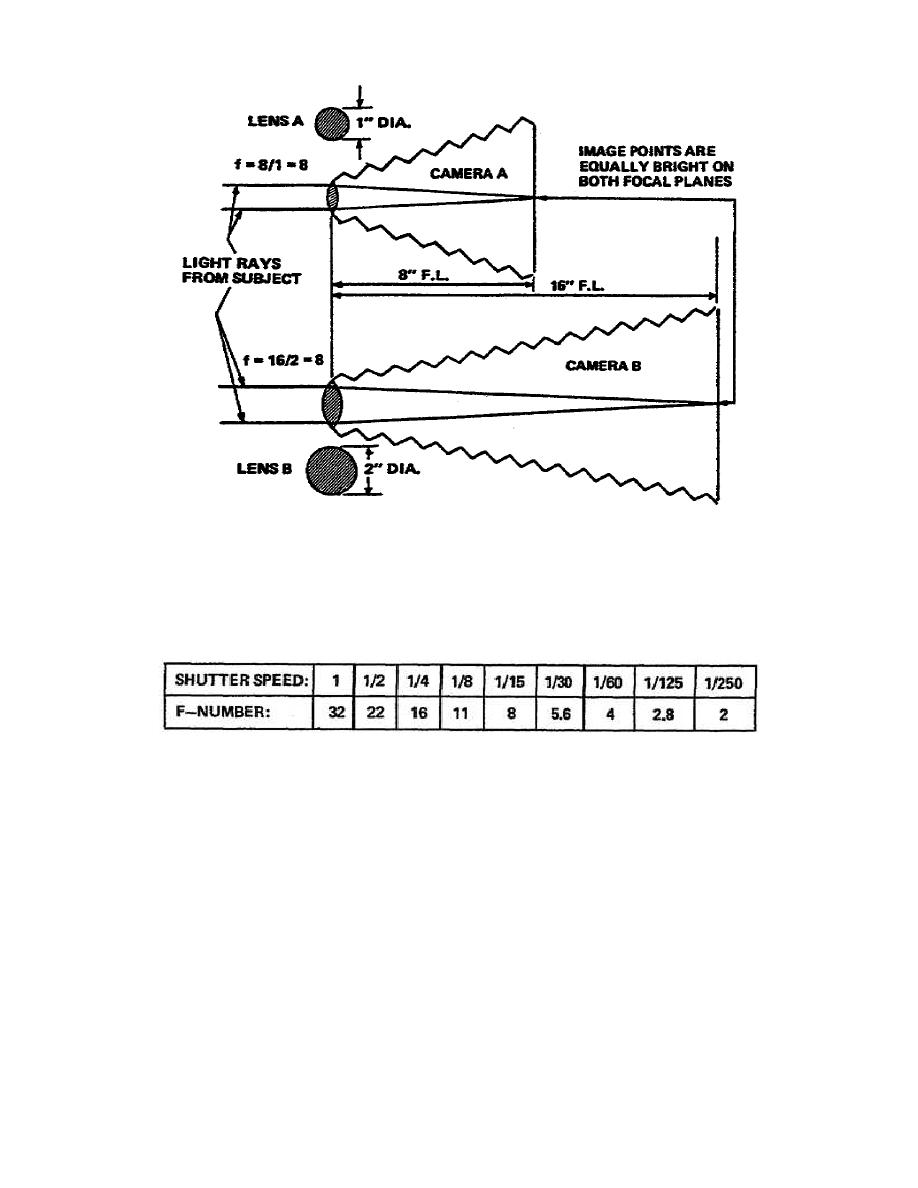
Figure 1-6.
Equal f/numbers produce equal intensities
b. When photography students first encounter the f/number sequence
engraved on a lens, they are usually a little put off because it looks more
complicated than it really is. Look at the f/number sequence beginning with
f/1 in Table 1-1.
Table 1-1.
The standard sequence of whole f/number
c. The standard sequence is one which every photographer must know by
heart. Each number represents a change in the intensity of the light by a
factor of 2. As the numbers increase, the amount of light passing through
the lens decreases to half that of the previous f/number. That is, if the
lens was initially set at f/5.6 and it is changed to f/8, the light passing
through has been reduced exactly in half; and if the setting is changed from
f/8 to f/11, the light is cut in half again, and from f/11 to f/16, in half
again. The reverse happens when changing from a large f/number to the next
smaller number.
For example, a lens setting changed from f/32 to f/22
exactly doubles the intensity of the light, and from f/22 to f/16 doubles
again. Remember, as the f/number increases, the light passing through the
lens decreases because the aperture is smaller.
5


 Previous Page
Previous Page
